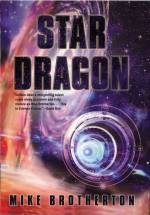Search
Science Fiction in Science
September 3rd, 2008
Sometimes I tell people that I write science fiction for Tor and the Astrophysical Journal. That’s tongue in cheek, mostly, but there is a lot of stuff that scientists work on that is, for want of a better term, “science fiction.” Except that it’s very well-informed with science and worked out in some detail. It’s a detailed premise, without a story.
I try to scan the astrophysics preprint server daily (at least now that I’m on sabbatical). Astronomers upload and unofficially publish here months in advance of the in print journals in order to be more timely. You can read the papers for free, although many require years of study to really make sense of (a combination of jargon, audience, etc.).
I’m going to try to point out papers I see there that have some relevance to science fiction fans or writers, with the links and abstracts, sometimes with commentary. There are weeks that go by with nothing of special interest, and sometimes multiple papers in a single day. We’ll start with three, two from today and one from last month.
The Cepheid Galactic Internet by Learned et al.
We propose that a sufficiently advanced civilization may employ Cepheid variable stars as beacons to transmit all-call information throughout the galaxy and beyond. One can construct many scenarios wherein it would be desirable for such a civilization of star ticklers to transmit data to anyone else within viewing range. The beauty of employing Cepheids is that these stars can be seen from afar(we monitor them out through the Virgo cluster), and any developing technological society would seem to be likely to closely observe them as distance markers. Records exist of Cepheids for well over one hundred years. We propose that these (and other regularly variable types of stars) be searched for signs of phase modulation (in the regime of short pulse duration) and patterns, which could be indicative of intentional signaling.
My gut reaction is that this is a little dumb in the sense that a civilization that can do this can probably come up with a better idea. But it’s kind of a cool idea.
Natural Transfer of Viable Microbes in Space from Planets in the Extra-Solar Systems to a Planet in our Solar System and Vice-Versa by Valtonen et al.
We investigate whether it is possible that viable microbes could have been transported to Earth from the planets in extra-solar systems by means of natural vehicles such as ejecta expelled by comet or asteroid impacts on such planets. The probabilities of close encounters with other solar systems are taken into account as well as the limitations of bacterial survival times inside ejecta in space, caused by radiation and DNA decay. The conclusion is that no potentially DNA/RNA life-carrying ejecta from another solar system in the general Galactic star field landed on Earth before life already existed on Earth, not even if microbial survival time in space is as long as tens of millions of years. However, if the Sun formed initially as a part of a star cluster, as is commonly assumed, we cannot rule out the possibility of transfer of life from one of the sister systems to us. Likewise, there is a possibility that some extra-solar planets carry life that originated in our solar system. It will be of great interest to identify the members of the Sun’s birth cluster of stars and study them for evidence for planets and life on the planets. The former step may be accomplished by the GAIA mission, the latter step by the SIM and DARWIN missions. Therefore it may not be too long until we have experimental knowledge on the question whether the natural transfer of life from one solar system to another has actually taken place.
Pretty cool. Natural panspermia among star clusters, and reason to think that there could be similar biologies among stars from the same birth clusters.
Gas disks to gas giants: Simulating the birth of planetary systems by Thommes et al.
The ensemble of now more than 250 discovered planetary systems displays a wide range of masses, orbits and, in multiple systems, dynamical interactions. These represent the end point of a complex sequence of events, wherein an entire protostellar disk converts itself into a small number of planetary bodies. Here, we present self-consistent numerical simulations of this process, which produce results in agreement with some of the key trends observed in the properties of the exoplanets. Analogs to our own solar system do not appear to be common, originating from disks near the boundary between barren and (giant) planet-forming.
This means that if you want solar systems like ours to be rare to make your story work, you’ve got some theoretical support.
You can follow any responses to this entry through the RSS 2.0 feed. You can leave a response, or trackback from your own site.


Ug… I don’t know about the first two in regards to writing science fiction…
Cephied as a communication tool? Talk about one of the more inefficient means ever concieved. Of course, I suppose if you wanted to leave a message to, say, not accidentaly active a spider star…
Organisms transported to Earth from outer space? I think I read this one somewhere already… Maybe someone more scientifically literate can write “The 51 Peg Strain”